Table of Contents
UPSC IAS Mains General Studies Question Paper 2020:
IAS Mains General Studies (Paper-I):
(1) The rock-cut architecture represents one of the most important sources of our knowledge of early Indian art and history. Discuss. (Answer in 150 words) (10)
(2) Pala period is the most significant phase in the history of Buddhism in India. Enumerate. (Answer in 150 words) (10)
(3) Evaluate the policies of Lord Curzon and their long term implications on the national movements. (Answer in 150 words) (10)
(4) Discuss the geophysical characteristics of Circum- Pacific Zone. (Answer in 150 words) (10)
(5) The process of desertification does not have climate boundaries. Justify with examples. (Answer in 150 words) (10)
(6) How will the melting of Himalayan glaciers have a far-reaching impact on the water resources of India? (Answer in 150 words) (10)
(7) Account for the present location of iron and steel industries away from the source of raw material, by giving examples. (Answer in 150 words) (10)
(8) Has caste lost its relevance in understanding the multi-cultural Indian Society? Elaborate your answer with illustrations. (Answer in 150 words) (10)
(9) COVID-19 pandemic accelerated class inequalities and poverty in India. Comment. (Answer in 150 words) (10)
(10) Do you agree that regionalism in India appears to be a consequence of rising cultural assertiveness? Argue. (Answer in 150 words) (10)
(11) Indian Philosophy and tradition played a significant role in conceiving and shaping the monuments and their art in India. Discuss. (Answer in 250 words) (15)
(12) Persian literary sources of medieval India reflect the spirit of the age. Comment. (Answer in 250 words) (15)
(13) Since the decade of the 1920s, the national movement acquired various ideological strands and thereby expanded its social base. Discuss. (Answer in 250 words) (15)
(14) The interlinking of revivers can provide viable solutions to the multi-dimensional inter-related problems of droughts, floods and interrupted navigation. Critically examine. (Answer in 250 words) (15)
(15) Account for the huge flooding of million cities in India including the smart ones like Hyderabad and Pune. Suggest lasting remedial measures. (Answer in 250 words) (15)
(16) India has immense potential of solar energy though there are regional variations in its developments. Elaborate. (Answer in 250 words) (15)
(17) Examine the status of forest resources of India and its resultant impact on climate change. (Answer in 250 words) (15)
(18) Is diversity and pluralism in India under threat due to globalisation? Justify your answer. (Answer in 250 words) (15)
(19) Customs and traditions suppress reason leading to obscurantism. Do you agree? (Answer in 250 words) (15)
(20) How have digital initiatives in India contributed to the functioning of the education system in the country? Elaborate your answer. (Answer in 250 words) (15)
IAS Mains General Studies (Paper-II):
(1) “There is a need for simplification of procedure for disqualification of persons found guilty of corrupt practices under the Representation of Peoples Act”. Comment. (Answer in 150 words) (10)
(2) “Recent amendments to the Right to Information Act will have profound impact on the autonomy and independence of the Information Commission”. Discuss. (Answer in 150 words) (10)
(3) How far do you think cooperation, competition and confrontation have shaped the nature of federation in India? Cite some recent examples to validate your answer. (Answer in 150 words) (10)
(4) The judicial systems in India and UK seem to be converging as well as diverging in recent times. Highlight the key points of convergence and divergence between the two nations in terms of their judicial practices. (Answer in 150 words) (10)
(5) ‘Once a Speaker, Always a Speaker’ ! Do you think this practice should be adopted to impart objectivity to the office of the Speaker of Lok Sabha? What could be its implications for the robust functioning of parliamentary business in India? (Answer in 150 words) (10)
(6) In order to enhance the prospects of social development, sound and adequate health care policies are needed particularly in the fields of geriatric and maternal health care. Discuss. (Answer in 150 words) (10)
(7) “Institutional quality is a crucial driver of economic performance”. In this context suggest reforms in Civil Service for strengthening democracy. (Answer in 150 words) (10)
(8) “The emergence of Fourth Industrial Revolution (Digital Revolution) has initiated e-Governance as an integral part of government”. Discuss. (Answer in 150 words) (10)
(9) Critically examine the role of WHO in providing global health security during the Covid-19 pandemic. (Answer in 150 words) (10)
(10) ‘Indian diaspora has a decisive role to play in the politics and economy of America and European Countries’. Comment with examples. (Answer in 150 words) (10)
(11) Indian Constitution exhibits centralising tendencies to maintain unity and integrity of the nation. Elucidate in the perspective of the Epidemic Diseases Act, 1897; The Disaster Management Act, 2005 and recently passed Farm Acts. (Answer in 250 words) (15)
(12) Judicial Legislation is antithetical to the doctrine of separation of powers as envisaged in the Indian Constitution. In this context justify the filing of large number of public interest petitions praying for issuing guidelines to executive authorities. (Answer in 250 words) (15)
(13) The strength and sustenance of local institutions in India has shifted from their formative phase of ‘Functions, Functionaries and Funds’ to the contemporary stage of ‘Functionality’. Highlight the critical challenges faced by local institutions in terms of their functionality in recent times. (Answer in 250 words) (15)
(14) Rajya Sabha has been transformed from a ‘useless stepney tyre’ to the most useful supporting organ in past few decades. Highlight the factors as well as the areas in which this transformation could be visible. (Answer in 250 words) (15)
(15) Which steps are required for constitutionalization of a Commission? Do you think imparting constitutionality to the National Commission for Women would ensure greater gender justice and empowerment in India? Give reasons. (Answer in 250 words) (15)
(16) “The incedence and intensity of poverty are more important in determining poverty based on income alone”. In this context analyse the latest United Nations Multidimensional Poverty Index Report. (Answer in 250 words) (15)
(17) “Micro-Finance as an anti-poverty vaccine, is aimed at asset creation and income security of the rural poor in India”. Evaluate the role of the Self Help Groups in achieving the twin objectives along with empowering women in rural India. (Answer in 250 words) (15)
(18) National Education Policy 2020 is in conformity with the Sustainable Development Goal-4 (2030). It intends to restructure and reorient education system in India. Critically examine the statement. (Answer in 250 words) (15)
(19) ‘Quadrilateral Security Dialogue (Quad)’ is transforming itself into a trade bloc from a military alliance, in present times – Discuss. (Answer in 250 words) (15)
(20) What is the significance of Indo-US defence deals over Indo-Russian defence deals? Discuss with reference to stability in the Indo-Pacific region. (Answer in 250 words) (15)
IAS Mains General Studies (Paper-III):
(1) Explain intra-generational and inter-generational issues of equity from the perspective of inclusive growth and sustainable development. (Answer in 150 words) (10)
(2) Define potential GDP and explain its determinants. What are the factors that have been inhibiting India from realizing its potential GDP? (Answer in 150 words) (10)
(3) What are the main constraints in transport and marketing of agricultural produce in India? (Answer in 150 words) (10)
(4) What are the challenges and opportunities of food processing sector in the country? How can income of the farmers be substantially increased by encouraging food processing? (Answer in 150 words) (10)
(5) What do you understand by nanotechnology and how is it helping in health sector? (Answer in 150 words) (10)
(6) How is science interwoven deeply with our lives? What are the striking changes in agriculture triggered off by the science-based technologies? (Answer in 150 words) (10)
(7) How does the draft Environment Impact Assessment (EIA) Notification, 2020 differ from the existing EIA Notification, 2006? (Answer in 150 words) (10)
(8) What are the salient features of the Jal Shakti Abhiyan launched by the Government of India for water conservation and water security? (Answer in 150 words) (10)
(9) Discuss different types of cybercrimes and measures required to be taken to fight the menace. (Answer in 150 words) (10)
(10) For effective border area management, discuss the steps required to be taken to deny local support to militants and also suggest ways to manage favourable perception among locals. (Answer in 150 words) (10)
(11) Explain the meaning of investment in an economy in terms of capital formation. Discuss the factors to be considered while designing a concession agreement between a public entity and a private entity. (Answer in 250 words) (15)
(12) Explain the rationale behind the Goods and Services Tax (Compensation to States) Act of 2017. How has COVID-19 impacted the GST compensation fund and created new federal tensions? (Answer in 250 words) (15)
(13) What are the major factors responsible for making rice-wheat system a success? In spite of this success how has this system become bane in India? (Answer in 250 words) (15)
(14) Suggest measures to improve water storage and irrigation system to make its judicious use under depleting scenario. (Answer in 250 words) (15)
(15) COVID-19 pandemic has caused unprecedented devastation worldwide. However, technological advancements are being availed readily to win over the crisis. Give an account of how technology was sought to aid management of the pandemic. (Answer in 250 words) (15)
(16) Describe the benefits of deriving electric energy from sunlight in contrast to the conventional energy generation. What are the initiatives offered by our Government for this purpose? (Answer in 250 words) (15)
(17) What are the key features of the National Clean Air Programme (NCAP) initiated by the Government of India? (Answer in 250 words) (15)
(18) Discuss the recent measures initiated in disaster management by the Government of India departing from the earlier reactive approach. (Answer in 250 words) (15)
(19) What are the determinants of left-wing extremism in Eastern part of India? What strategy should Government of India, civil administration and security forces adopt to counter the threat in the affected areas? (Answer in 250 words) (15)
(20) Analyse internal security threats and transborder crimes along Myanmar, Bangladesh and Pakistan borders including Line of Control (LoC). Also discuss the role played by various security forces in this regard. (Answer in 250 words) (15)
IAS Mains General Studies (Paper-IV):
Section A:
(1) (a) Discuss the role of ethics and values in enhancing the following three major components of Comprehensive National Power (CNP) viz. human capital, soft power (culture and policies), and social harmony. (150 words) (10)
(b) “Education is not an injunction, it is an effective and pervasive tool for all-round development of an individual and social transformation”. Examine the New Education Policy, 2020 (NEP, 2020) in light of the above statement. (150 words) (10)
(2) (a) ‘Hatred is destructive of a person’s wisdom and conscience that can poison a nation’s spirit.’ Do you agree with this view? Justify your answer. (150 words) (10)
(b) What are the main components of emotional intelligence (EI)? Can they be learned? Discuss. (150 words) (10)
(3) (a) What teachings of Buddha are most relevant today and why? Discuss. (150 words) (10)
(b) “The will to power exists, but it can be tamed and be guided by rationality and principles of moral duty.’ Examine this statement in the context of international relations. (150 words) (10)
(4) (a) Distinguish between laws and rules. Discuss the role of ethics in formulating them. (150 words) (10)
(b) A positive attitude is considered to be an essential characteristic of a civil servant who is often required to function under extreme stress. What contributes to a positive attitude in a person? (150 words) (10)
(5) (a) What are the main factors responsible for gender inequality in India? Discuss the contribution of Savitribai Phule in this regard. (150 words) (10)
(b) “The current internet expansion has instilled a different set of cultural values which are often in conflict with traditional values.’ Discuss. (150 words) (10)
(6) (a) “Condemn none: if you can stretch out a helping hand, do so. If not, fold your hands, bless your brothers, and let them go their own way.” – Swami Vivekanand (150 words) (10)
(b) “The best way to find yourself is to lose yourself in the service of others.” – Mahatma Gandhi (150 words) (10)
(c) “A system of morality which is based on relative emotional values is a mere illusion, a thoroughly vulgar conception which has nothing sound in it and nothing true.” – Socrates (150 words) (10)
Section B:
(7) Rajesh Kumar is a senior public servant, with a reputation of honesty and forthrightness, currently posted in the Finance Ministry as Head of the Budget Division. His department is presently busy in organising the budgetary support to the states, four of which are due to go to the polls within the financial year.
This year’s annual budget had allotted Rs. 8300 crores for the National Housing Scheme (NHS), a centrally sponsored social housing scheme for the weaker sections of society. Rs. 775 crores have been drawn for NHS till June.
The Ministry of Commerce had long been pursuing a case for setting up a Special Economic Zone (SEZ) in a southern state to boost exports. After two years of detailed discussions between the centre and state, the Union Cabinet approved the project in August. Process was initiated to acquire the necessary land.
Eighteen months ago a leading Public Sector Unit (PSU) had projected the need for setting up a large natural gas processing plant in a northern state for the regional gas grid. The required land is already in possession of the PSU. The gas grid is an essential component of the national energy security strategy. After three rounds of global bidding the project was allotted to an MNC, M/s XYZ Hydrocarbons. The first tranche of payment to the MNC is scheduled to be made in December.
Finance Ministry was asked for a timely allocation of an additional Rs. 6000 crores for these two developmental projects. It was decided to recommend re-appropriation of this entire amount from the NHS allocation. The file was forwarded to Budget Department for their comments and further processing. On studying the case file, Rajesh Kumar realized that this re-appropriation may cause inordinate delay in the execution of NHS, a project much publicized in the rallies of senior politicians. Correspondingly, non-availability of finances would cause financial loss in the SEZ and national embarrassment due to delayed payment in an international project.
Rajesh Kumar discussed the matter with his seniors. He was con politically sensitive situation needs to be processed immediately. Rajesh Kumar realized that diversion of funds from NHS could raisé difficult questions for the government in the Parliament.
Discuss the following with reference to this case :
(a) Ethical issues involved in re-appropriation of funds from a welfare project to the developmental projects.
(b) Given the need for proper utilization of public funds, discuss the options available to Rajesh Kumar. Is resigning a worthy option?
(250 words) (20)
(8) The Chairman of Bharat Missiles Ltd (BML) was watching a program on TV wherein the Prime Minister was addressing the nation on the necessity of developing a self-reliant India. He subconsciously nodded in agreement and smiled to himself as he mentally reviewed BML’s journey in the past two decades. BML had admirably progressed from producing first generation anti-tank guided missiles (ATGMs) to designing and producing state of the art ATGM weapon systems that would be the envy of any army. He sighed in reconciliation with his assumptions that the government would probably not alter the status quo of a ban on export of military weaponry.
To his surprise, the very next day he got a telephone call from the Director General, Ministry of Defence, asking him to discuss the modalities of increasing BML production of ATGMs as there is a possibility of exporting the same to a friendly foreign country. The Director General wanted the Chairman to discuss the details with his staff at Delhi next week.
Two days later, at a press conference, the Defence Minister stated that he aims to double the current weapons export levels within five years. This would give an impetus to financing the development and manufacture of indigenous weapons in the country. He also stated that all indigenous arms manufacturing nations have a very good record of international arms trade.
As Chairman of BML, what are your views on the following points ?
(a) As an arms exporter of a responsible nation like India, what are the ethical issues involved in arms trade?
(b) List five ethical factors that would influence the decision to sell arms to foreign governments.
(250 words) (20)
(9) Rampura, a remote district inhabited by a tribal population, is marked by extreme backwardness and abject poverty. Agriculture is the mainstay of the local population, though it is primarily subsistence due to the very small land holdings. There is insignificant industrial or mining activity. Even the targeted welfare programs have inadequately benefited the tribal population. In this restrictive scenario, the youth has begun to migrate to other states to supplement the family income. Plight of minor girls is that their parents are persuaded by labour contractors to send them to work in the Bt Cotton farms of a nearby state. The soft fingers of the minor girls are well suited for plucking the cotton. The inadequate living and working conditions in these farms have caused serious health issues for the minor girls. NGOs in the districts of domicile and the cotton farms appear to be compromised and have not effectively espoused the twin issues of child labour and development of the area.
You are appointed as the District Collector of Rampura. Identify the ethical issues involved. Which specific steps will you initiate to ameliorate the conditions of minor girls of your district and to improve the over-all economic scenario in the district?
(250 words) (20)
(10) You are a municipal commissioner of a large city, having the reputation of a very honest and upright officer. A huge multipurpose mall is under construction in your city in which a large number of daily wage earners are employed. One night, during monsoons, a big chunk of the roof collapsed causing instant death of four labourers cluding two minors. Many more were seriously injured requiring immediate medical attention. The mishap resulted in a big hue and cry, forcing the government to institute an enquiry.
Your preliminary enquiry has revealed a series of anomalies. The material used for the construction was of poor quality. Despite the approved building plans permitting only one basement, an additional basement has been constructed. This was overlooked during the periodic inspections by the building inspecto municipal corporation. In your enquiry, you noticed that the construction of the mall was given the green signal despite encroaching on areas earmarked for a green belt and a slip road in the Zonal Master Plan of the city. The permission to construct the mall was accorded by the previous Municipal Commissioner who is not only your senior and well known to you professionally, but also a good friend.
Prima facie, the case appears to be of a widespread nexus between officials of the Municipal Corporation and the builders. Your colleagues are putting pressure on you to go slow in the enquiry. The builder, who is rich and influential, happens to be a close relative of a powerful minister in the state cabinet. The builder is persuading you to hush up the matter, promising you a fortune to do so. He also hinted that if this matter is not resolved at the earliest in his favour there is somebody in his office who is waiting to file a case against you under the POSH Act.
Discuss the ethical issues involved in the case. What are the options available to you in this situation? Explain your selected course of action.
(250 words) (20)
(11) Parmal is a small but underdeveloped district. It has rocky terrain that is not suitable for agriculture, though some subsistence agriculture is being done on small plots of land. The area receives adequate rainfall and has an irrigation canal flowing through it. Amria, its administrative centre, is a medium sized town. It houses a large district hospital, an Industrial Training Institute and some privately owned skill training centres. It has all the facilities of a district headquarters. A trunk railway line passes approximately 50 kilometres from Amria. Its poor connectivity is a major reason for the absence of any major industry therein. The state government offers a 10 years tax holiday as an incentive to new industry.
In 2010 Anil, an industrialist, decided to take benefits to set up Amria Plastic Works (APW) in Noora village, about 20 km from Amria. While the factory was being built, Anil hired the required key labour and got them trained at the skill training centres at Amria. This act of his made the key personnel very loyal to APW.
APW started production in 2011 with the labour drawn fully from Noora village. The villagers were very happy to get employment near their homes and were motivated by the key personnel to meet the production targets with high quality. APW started making large profits, a sizeable portion of which was used to improve the quality of life in Noora. By 2016, Noora could boast of a greener village and a renovated village temple. Anil liaised with the local MLA to increase the frequency of the bus services to Amria. The government also opened a primary health care centre and primary school at Noora in buildings constructed by APW, APW used its CSR funds to set up women’s self-help groups, subsidize primary education to the village children and procure an ambulance for use by its employees and the needy.
In 2019, there was a minor fire in APW. It was quickly extinguished as fire safety protocols were in place in the factory. Investigations revealed that the factory had been using electricity in excess of its authorized capacity. This was soon rectified The next year, due to a nationwide lockdown, the requirement of production fell for four months. Anil decided that all employees would be paid regularly. He employed them to plant trees and improve the village habitat.
APW had developed a reputation of high quality production and a motivated workforce.
Critically analyse the story of APW and state the ethical issues involved. Do you consider APW as a role model for development of backward areas? Give reasons.
(250 words) (20)
(12) Migrant workers have always remained at the socio-economic margins of our society, silently serving as the instrumental labour force of urban economics. The pandemic has brought them into national focus. On announcement of a countrywide lockdown, a very large number of migrant workers decided to move back from their places of employment to their native villages. The non-availability of transport created its own problems. Added to this was the fear of starvation and inconvenience to their families. This caused, the migrant workers to demand wages and transport facilities for returning to their villages. Their mental agony was accentuated by multiple factors such as a sudden loss of livelihood, possibility of lack of food and inability to assist in harvesting their rabi crop due to not being able to reach home in time. Reports of inadequate response of some districts in providing the essential boarding and lodging arrangements along the way multiplied their fears.
You have learnt many lessons from this situation when you were tasked to oversee the functioning of the District Disaster Relief Force in your district. In your opinion what ethical issues arose in the current migrant crisis? What do you understand by an ethical care giving state? What assistance can the civil society render to mitigate the sufferings of migrants in similar situations?
(250 words) (20)
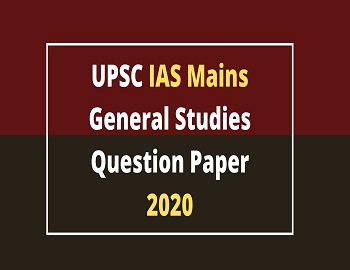
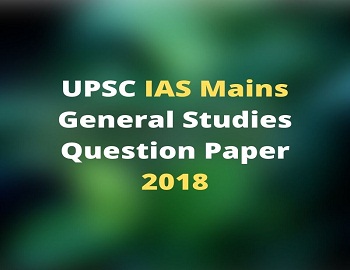
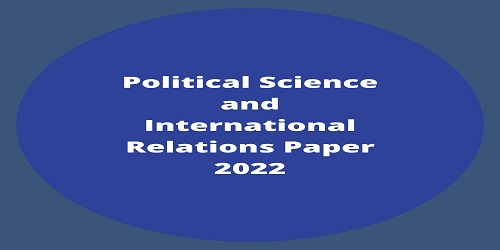


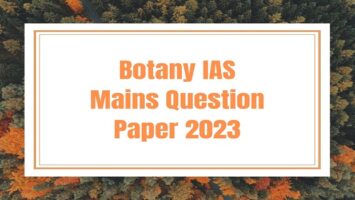
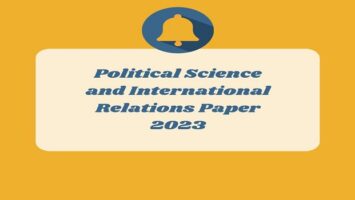
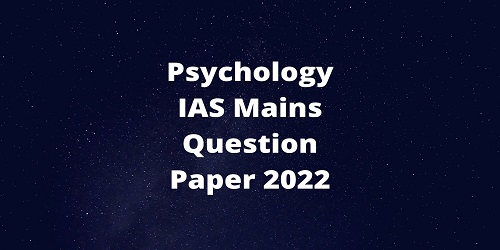

Comments (No)